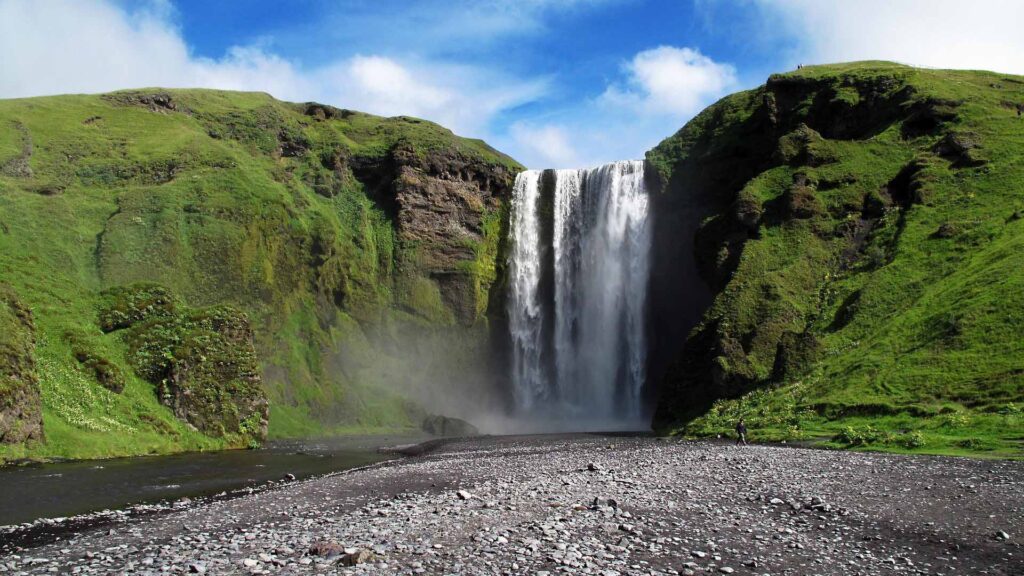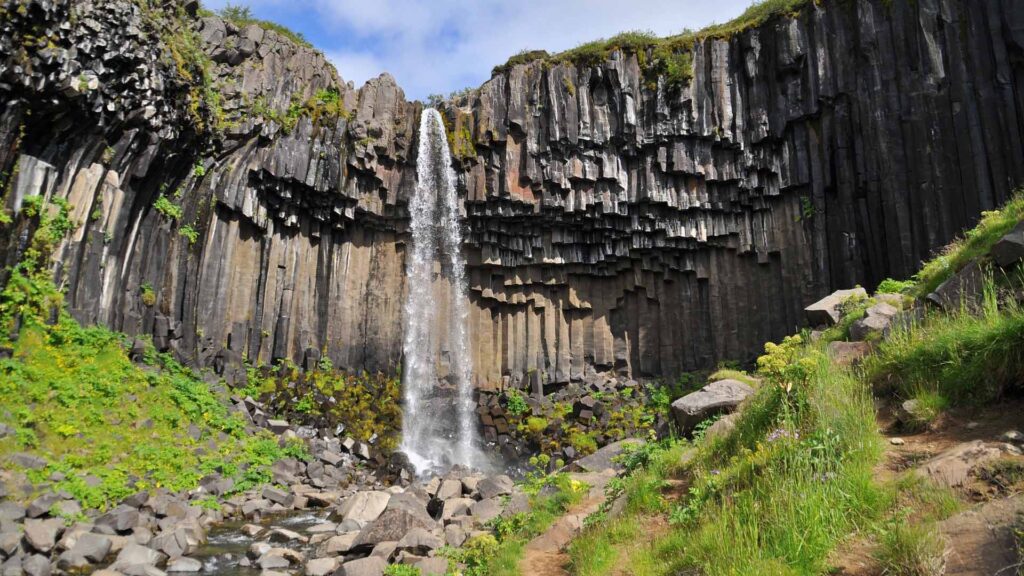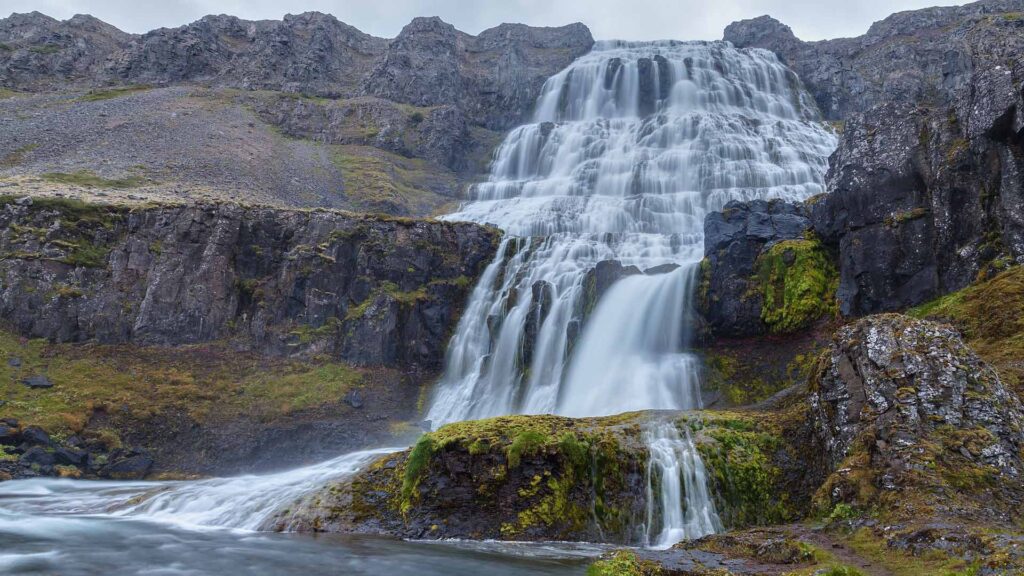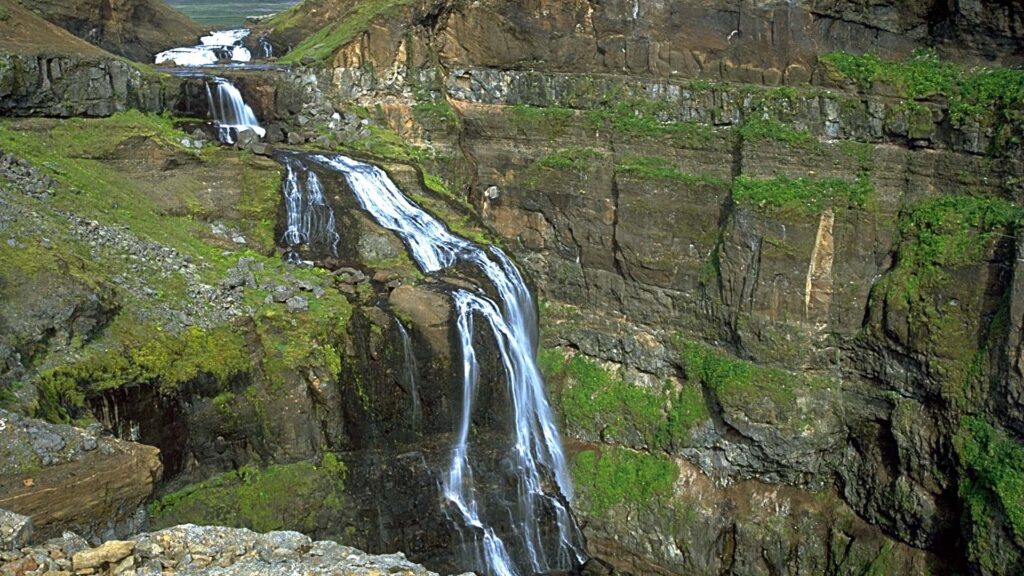Top 20 Waterfalls in Iceland
Iceland is a land of waterfalls. With its dramatic landscapes, glaciers, and volcanic terrain, the country is home to countless cascades, from towering giants to secluded gems. The post Top 20 Waterfalls in Iceland appeared first on Your Friend in Reykjavik.

Iceland is a land of waterfalls. With its dramatic landscapes, glaciers, and volcanic terrain, the country is home to countless cascades, from towering giants to secluded gems. Some waterfalls in Iceland are famous landmarks, easily accessible and part of well-known tourist routes, while others require a bit more effort to reach—but the reward is always worth it.
In this guide, we’ve rounded up the 20 best waterfalls in Iceland. Whether you’re looking for the iconic Gullfoss, the raw power of Dettifoss, or the unique basalt formations of Svartifoss, there’s something for every adventurer. We’ve also included lesser-known but stunning falls for those who want to explore off-the-beaten paths.
Are you thinking about travelling to Iceland? Your Friend in Reykjavik is here to help! Whether you need advice, tour bookings, or a custom private tour, just contact us!
Famous & Must-See Waterfalls in Iceland
1. Gullfoss

Gullfoss, meaning Golden Waterfall, is possibly the most famous waterfall in Iceland, and not without reason. The beautiful waterfall is part of the Golden Circle, a term coined in the early 80s.
In the early 20th century, foreign investors wanted to turn Gullfoss into a hydroelectric power plant, but a local farmer’s daughter, Sigríður Tómasdóttir, fought to protect it. She threatened to throw herself into the falls in protest. Her efforts helped preserve Gullfoss, which is now one of Iceland’s most famous natural sites.
- Location: Golden Circle, Southwest Iceland
- Height: 32 metres (two-tiered)
- Accessibility: Easy; short walk from the car park.
2. Seljalandsfoss

Just a short drive from Hvolsvöllur in south Iceland, you’ll find Seljalandsfoss. It originates from Eyjafjallajökull, the volcano that erupted in 2010, disrupting global flights. The coastline was much closer in Viking times, and this waterfall likely dropped straight into the sea.
Seljalandsfoss is a photographer’s dream. The picturesque scenery offers countless opportunities for stunning photos. Capture the waterfall from the front for classic shots, or venture behind for more dramatic and unique angles.
- Location: South Iceland, along the Ring Road
- Height: 60 metres
- Accessibility: Easy; you can walk behind it but expect to get wet.
3. Skógafoss

Skógafoss is another well-known waterfall, just a short drive from Seljalandsfoss. According to legend, the first Viking settler in the area, Þrasi Þórólfsson, hid a treasure chest behind the falls. Later, people tried to pull it out but only managed to grab the ring on its side before the chest vanished. That ring is now in a local museum.
There’s a staircase with over 500 steps leading to the top of Skógafoss. You get a wide view of the landscape from there, with the Skógá River winding through the countryside. On a clear day, you can even see the Atlantic Ocean. The climb is a bit of a workout, but the view makes it worth it.
Skógafoss marks the start (or finish) of the epic Fimmvörðuháls hike to Þórsmörk, a stunning 25 km trail that takes you through waterfalls, volcanic landscapes, and breathtaking mountain views.
- Location: South Iceland, along the Ring Road
- Height: 60 metres
- Accessibility: Easy; stairs lead to a viewpoint above the falls.
4. Dettifoss

Dettifoss is Europe’s second most powerful waterfall, behind only the Rhine Falls in Switzerland. Located in northern Iceland, it’s a key stop on the Diamond Circle sightseeing route and a popular detour from the Ring Road. It’s more about raw power than beauty, with thundering water crashing into the Jökulsárgljúfur canyon.
The waterfall was featured in the opening scene of Ridley Scott’s Prometheus and has long been a symbol of nature’s sheer force. Over thousands of years, its relentless flow has helped carve out the vast canyon below. Dettifoss is also on the way to or from Ásbyrgi, a horseshoe-shaped canyon said to be formed by the hoof of Sleipnir, Odin’s eight-legged horse.
- Location: North Iceland, Vatnajökull National Park
- Height: 44 metres
- History & Myth:
- Accessibility: Moderate; gravel roads lead to east and west viewpoints.
5. Goðafoss

Goðafoss, or “Waterfall of the Gods,” got its name from a key moment in Icelandic history. In the year 1000, when Iceland officially converted to Christianity, the lawspeaker Þorgeir Ljósvetningagoði is said to have thrown statues of Norse gods into the falls to mark the change.
Located in North Iceland, Goðafoss is part of the Diamond Circle, a scenic route that also includes Dettifoss, Ásbyrgi, and Lake Mývatn. The waterfall has a wide, horseshoe-shaped drop, where two main cascades plunge 12 metres (39 feet), with a smaller stream flowing between them.
Even in a country full of incredible waterfalls, Goðafoss is one of the most stunning.
- Location: North Iceland, near Akureyri
- Height: 12 metres (horseshoe-shaped)
- Accessibility: Easy; short trails lead to viewing areas.
Dramatic & Powerful Waterfalls in Iceland
6. Háifoss

Háifoss, meaning “High Falls,” is one of Iceland’s tallest waterfalls, dropping 122 metres (400 feet) into a deep canyon. It’s located in Þjórsárdalur Valley, near Hekla, a volcano once believed by medieval Europeans to be an entrance to hell. The waterfall is fed by the Þjórsá River, Iceland’s longest, and sits next to Granni (“Neighbour”), another striking cascade.
Due to its remote location, Háifoss is less visited than other major waterfalls, but those who make the trip are rewarded with breathtaking views. A 4×4 vehicle is needed to reach the area, with a short walk leading to a spectacular viewpoint.
- Location: Highlands, near Hekla volcano
- Height: 122 metres
- Accessibility: Difficult; requires a 4×4 and some hiking.
7. Svartifoss

Svartifoss, or “Black Falls,” is known for the striking hexagonal basalt columns that surround it, formed by cooling lava over thousands of years. These unique rock formations inspired Icelandic architecture, most notably Hallgrímskirkja, Reykjavik’s famous church. Located in Skaftafell, part of Vatnajökull National Park, the waterfall drops 20 metres (66 feet) and is reached via a moderate 1.5 km hike from the visitor centre.
- Location: Skaftafell, Vatnajökull National Park
- Height: 20 metres
- Accessibility: Moderate; a 1.5 km uphill hike.
8. Hengifoss

Hengifoss is one of Iceland’s tallest waterfalls, dropping 128 metres (420 feet) down a cliff of layered red and black basalt. These colourful bands formed over millions of years from volcanic eruptions, with red clay-rich sediment trapped between lava layers. Fossils of ancient tree stumps and plants have been discovered nearby, evidence that Iceland was once covered in forests. The waterfall is located in East Iceland, near Egilsstaðir, and requires a 2.5 km uphill hike to reach.
- Location: East Iceland, near Egilsstaðir
- Height: 128 metres
- Accessibility: Moderate; a 2.5 km hike uphill.
9. Dynjandi

Dynjandi, meaning “Thundering,” is the largest waterfall in the Westfjords, cascading 100 metres (328 feet) down a series of rock terraces. Its wide, fan-like shape and powerful roar make it one of Iceland’s most breathtaking waterfalls. Often called the jewel of the Westfjords, it widens dramatically as it descends, resembling a bridal veil. A short but steep hike from the parking area leads past several smaller waterfalls before reaching the main cascade.
- Location: Westfjords
- Height: 100 metres (seven-tiered cascade)
- Accessibility: Moderate; a short but steep hike from the parking lot.
10. Kirkjufellsfoss

Kirkjufellsfoss is a small but picturesque waterfall on the Snæfellsnes Peninsula, best known for its stunning backdrop—Kirkjufell (Church Mountain). The mountain’s distinct shape made it a filming location for Game of Thrones, where it appeared as “Arrowhead Mountain” in the North. The waterfall itself is modest in size but, combined with Kirkjufell, creates one of Iceland’s most photographed landscapes.
- Location: Snæfellsnes Peninsula
- Height: 5 metres
- Accessibility: Easy; short walk from the road.
Hidden Gems in Iceland
11. Brúarfoss

Brúarfoss, meaning “Bridge Falls,” gets its name from a natural stone bridge that once spanned the river but was destroyed by an earthquake. Known for its vivid blue waters, it’s often called Iceland’s bluest waterfall. Though relatively small, its unique colour and multiple cascades make it a favourite among photographers. Located in the Golden Circle area, reaching Brúarfoss requires a 3 km hike along the Brúará River.
- Location: Golden Circle area
- Height: 3 metres
- Accessibility: Moderate; 3 km hike.
12. Ófærufoss

Ófærufoss is a beautiful multi-tiered waterfall located in Eldgjá Canyon, part of Vatnajökull National Park. It once had a natural stone arch spanning the falls, but it collapsed in the early 1990s due to erosion. Despite the loss of the arch, the waterfall remains a striking sight, with its cascading waters set against the rugged volcanic landscape. Access requires a 4×4 vehicle, followed by a hike into the canyon.
- Location: Highlands, Eldgjá canyon
- Height: 40 metres
- Accessibility: Difficult; 4×4 required.
13. Aldeyjarfoss

Aldeyjarfoss is a striking waterfall in North Iceland, known for the unique columnar basalt formations that surround it. These hexagonal rock columns were formed by cooling lava over thousands of years, creating a dramatic contrast with the turquoise glacial water of the Skjálfandafljót River. Located in a remote area of the Bárðardalur Valley, reaching the falls requires a 4×4 vehicle, but the otherworldly scenery makes the trip worthwhile.
- Location: North Iceland
- Height: 20 metres
- Accessibility: Difficult; 4×4 required.
14. Kvernufoss

Kvernufoss is a hidden gem in South Iceland, located just a short walk from Skógafoss. Tucked inside a narrow gorge, it remained largely unknown to tourists until recent years. Like Seljalandsfoss, you can walk behind the waterfall, offering a unique perspective with fewer crowds. The short hike to Kvernufoss follows a scenic trail through a peaceful valley, making it a great spot for those looking to escape the more crowded attractions.
- Location: Near Skógafoss
- Height: 30 metres
- Accessibility: Moderate; short hike.
15. Glymur

Glymur is Iceland’s second-tallest waterfall, dropping 198 metres (650 feet) into a deep canyon in Hvalfjörður (Whale Fjord). According to legend, a giant whale once lived in a nearby cave and terrorised the fjord until it was lured into the sea by a priest’s spell. The waterfall is reached via a challenging hike, which includes river crossings and stunning canyon views, making it a favourite for adventurous travellers.
- Location: Hvalfjörður
- Height: 198 metres
- Accessibility: Difficult; 3-4 hour hike.
Less-Known Waterfalls in Iceland but Stunning
16. Hraunfossar

Hraunfossar is a unique waterfall in West Iceland, where countless small streams seep through a lava field instead of plunging from a cliff. Fed by underground water from the Langjökull glacier, the falls emerge from the porous volcanic rock, creating a rare and beautiful sight. Stretching over 900 metres (2,950 feet), Hraunfossar is one of Iceland’s most unusual geological wonders and is easily accessible by a short walk from the car park.
- Location: West Iceland, near Reykholt
- Height: Series of small cascades stretching 900 metres
- Accessibility: Easy; short walk from the car park with well-maintained paths
17. Barnafoss

Barnafoss, meaning “Children’s Falls,” gets its name from a tragic legend. According to the story, two children from a nearby farm fell into the river and drowned while trying to cross a natural stone bridge that once spanned the falls. Their grieving mother is said to have had the bridge destroyed to prevent future accidents.
- Location: West Iceland, near Hraunfossar
- Height: Small but fast-flowing rapids
- Accessibility: Easy; short walk from the car park with viewing platforms
18. Rjúkandi

Rjúkandi is one of the few easily accessible waterfalls in East Iceland, located right along the Ring Road. Despite its beauty, it often goes unnoticed by travellers rushing to more famous sites. The waterfall cascades down a rugged mountainside in multiple streams, creating a picturesque and serene setting. Unlike some of Iceland’s more crowded waterfalls, Rjúkandi offers a peaceful stop with fantastic photo opportunities.
Location: East Iceland, near Möðrudalur
Height: Approximately 93 metres
Accessibility: Easy; short walk from the car park
19. Fagrifoss

Fagrifoss, meaning “Beautiful Falls,” is located in the Lakagígar lava field, an area shaped by one of Iceland’s deadliest volcanic eruptions in 1783. The eruption, known as the Laki eruption, caused widespread devastation, leading to famine and significant climate effects across Europe. The waterfall itself features a dramatic two-tiered drop, surrounded by rugged volcanic landscapes.
- Location: Highlands, near Lakagígar, South Iceland
- Height: Approximately 80 metres (262 feet)
- Accessibility: Difficult; requires a 4×4 vehicle and driving on rough F-roads
20. Sigöldugljúfur Waterfalls

Sigöldugljúfur, often called “The Valley of Tears,” was once a glacial river valley, but after the area was dammed for hydroelectric power, the main river disappeared, leaving behind a series of small, picturesque waterfalls. The contrast of vibrant blue water, lush greenery, and rugged volcanic cliffs makes this one of Iceland’s most surreal landscapes.
- Location: Highlands, near Landmannalaugar
- Height: Various small waterfalls along the canyon walls
- Accessibility: Difficult; requires a 4×4 vehicle to navigate rough Highland roads
Please signup for our newsletter for more fun facts and information about Iceland.
The post Top 20 Waterfalls in Iceland appeared first on Your Friend in Reykjavik.

 vigna
vigna 





